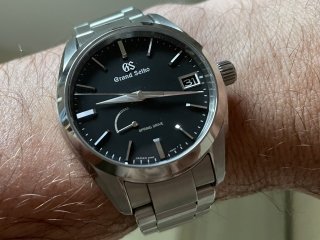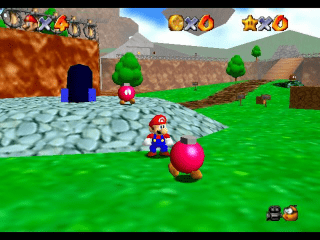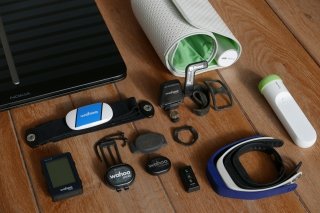


















Last Sunday, I participated in the Venloop, a half marathon event in Venlo. I completed the 21KM run in 2h05, a result I am satisfied with as this was my first ever 'official' event since I began running just three months ago. In this post, I'll share my experiences with training, balancing fitness data, and feeling fit.

Imagine a week without your smartphone, replaced solely by the sleek simplicity of a smartwatch. This week I did this, leaving my smartphone behind and letting an Apple Watch take the helm. Many hail this as a liberating escape from our attention-seeking digital sidekicks, but does it truly live up to the hype? Join me on this intriguing journey, where technology meets minimalism, and discover whether less really can be more.

The year 2022 has been very special to me, after working very hard to make it possible: me and my family finally made the big move to Limburg. To commemorate this milestone, I got myself a timeless timepiece: the Rolex DateJust 36. Read on to find out what it's like!

How often do you look in the mirror? Probably more than a few times a week! I have been thinking about this ever since I received my newest WHOOP 4.0 biometric sensor. It's great. But, why do I wear it? What value does it provide? Why should you wear it?

Sadness could be seen in my eyes when my custom made watch got damaged earlier this month, while awaiting repairs I was fortunate to wear a Grand Seiko. Its unique mix of craftsmanship, innovation and practicality is worth sharing with you.

For the past weeks I have been wearing two watches, and boy this is a thing! I love my mechanical watch, but I needed the modern connectivity of a smartwatch. I couldn't choose between them, so I decided to wear both. It's not as bad as you think, let me share some thoughts on my experience.

Downtime happens and it is nothing to be ashamed of, just make sure that you set yourself up to discover problems as soon as possible! You can use realtime uptime monitoring to automatically keep an eye on your servers and services. Read along to find out how.

Last month a very special package arrived from Switzerland, containing my custom made wrist watch. I decided to sell all my big brand watches and have them replaced by something unique, tailored to my personal preferences. This is the story of my watch.

This week I was cleaning my closet when I found an old watch. It came from my grandfather’s house. It looked like it had an adventurous live, full of wear and tear. I recognised that it had an automatic mechanical movement. Upon picking it up it almost instantly started running again. I wondered how cool it would be if I would gently clean it.

For the past six months I have been wearing the same watch, pretty much every day and night. It's a Tudor Black Bay 36 watch in steel, with a black dial. I like minimal (yet functional) design that lasts, this watch certainly ticks the right boxes. Read along to find out how wearable a smaller watch is in daily practice.

This month I did some research into how health is visualised in fitness apps and games. For a new app involving personal health I am looking for an intuitive way to visualise how healthy one person is. There are many colourful approaches out there!

The past months I have been wearing the WHOOP Strap 3.0, a wearable sensor that collects health and fitness data. It's different compared to most other fitness bands as it was designed with professional athletes in mind. It is focussed on daily strain, recovery and sleep. Read along to find out how this works.
Sleep monitoring is a popular feature of many smartwatches and wearables. Devices like Fitbit, Withings, Apple Watch and Biostrap analyse biometrics during your sleep. These wearables are worn on the wrist and use optical sensors to capture your heart rate. I wondered how the optical sensors would compare to a high resolution chest strap HR-monitor.

With modern wearables, smartwatches and fitness bands, it has become easy and common to measure your heart rate. There are however fundamental differences in sensor types. Some sensors capture the electrical signal from your heart while others use light to analyse the blood flowing through your vessels. If you're interested in measuring heart rate, it's good to understand these differences.

This month I have intensified my training to become fit for this year's Fietselfstedentocht, a 235KM bicycle ride through Friesland. Over the years I have tested different kinds of bike computer setups: from dedicated (and expensive) Garmin Edge bike computers to no data at all. Eventually I came up with a flexible setup to gather advanced ride data using my smartphone, let me explain how this works.

This week I went to Frankfurt for business. I had to perform maintenance to servers in a data centre. This seemed like a great opportunity to test the Apple Watch's usefulness in real life (other than health and fitness). I wondered, is the Apple Watch the modern tool watch?

This month Apple launched a new Apple Watch series and released an update to watchOS. The focus of the smartwatch is more and more gearing towards health and fitness. This made me curious, how well does Apple Watch work for different activities?

A good customer of mine was once a physiotherapist, he told me about people asking him to "feel their muscles" to tell them how they where doing. "Crazy!" he told me: "I can never feel better than the people themselves, if they only would listen to their body". This caused me to question the health and fitness sensors I use.

A good friend of mine had an issue with his Apple Watch, the digital crown lost a rubber ring causing the watch to lose its water resistance. Apple made no problem of it and offered to replace his "device". While it solved his problem, it felt painful to my watch lover's ears. It made me realise the one thing a smartwatch will never have: patina.

Most wearables (smartwatches, fitness trackers, etc.) use very basic sensors to capture heart rate. Their signal is binary: just counting beats. Biostrap is different, instead of just checking pulses, it captures a high-fidelity PPG waveform. These waveforms are the same kind that doctors use, making me wonder what I could learn from them!

Technology has come a long way since the first computer. Smartwatches today are very much an achievement of miniaturisation of technology. I recently used an Apple Watch Series 2 to find out if technology has come far enough to replace my mechanical watch, today I share you my findings.

Over the past years I have been no stranger to crazy experiments, but this time I really wanted to push it into the extreme: programming on an Apple Watch. Would it be possible to actually write code on such a tiny device? Why even bother? This post is about the case for crazy experiments, and why you should try too!

















